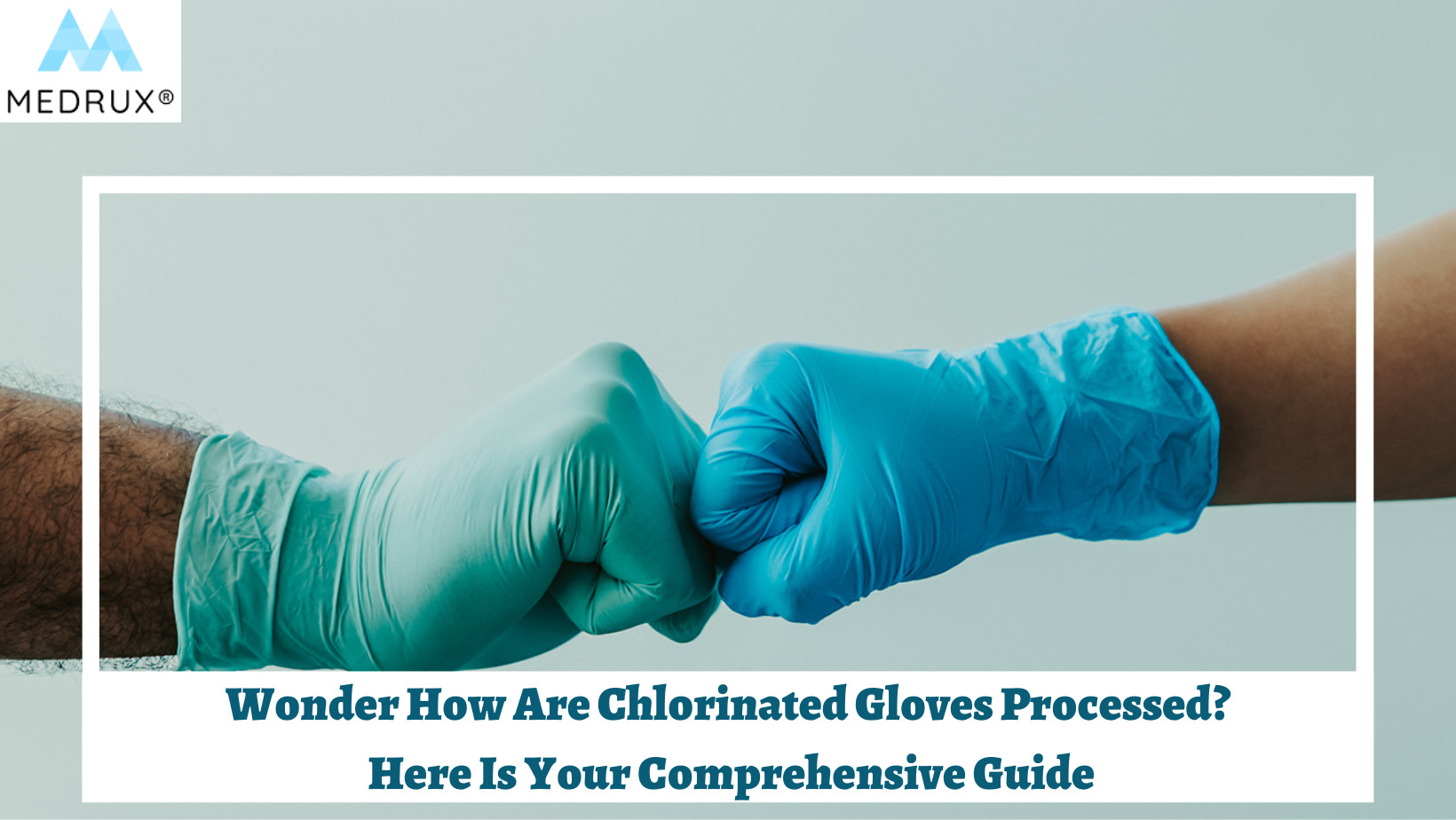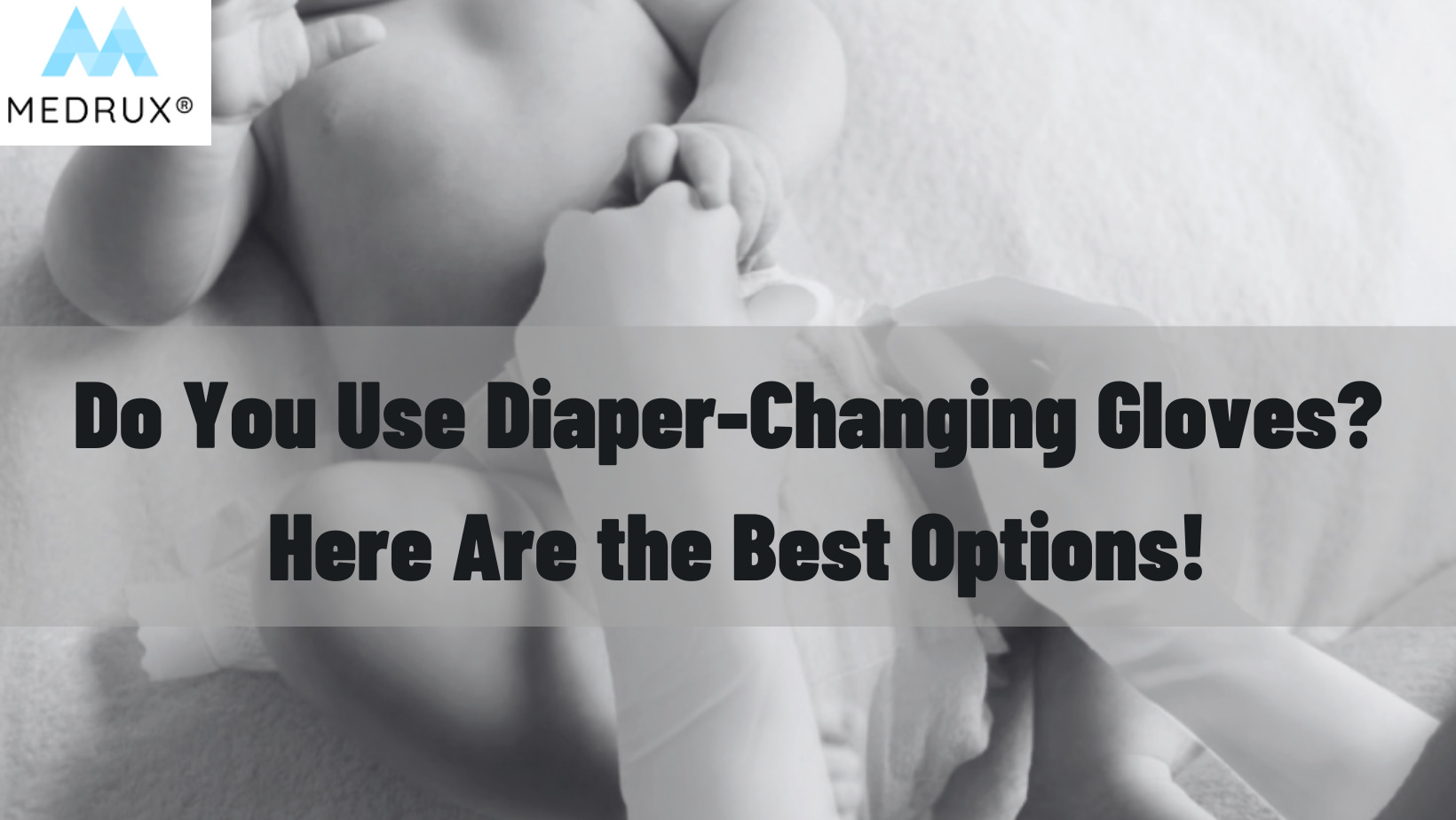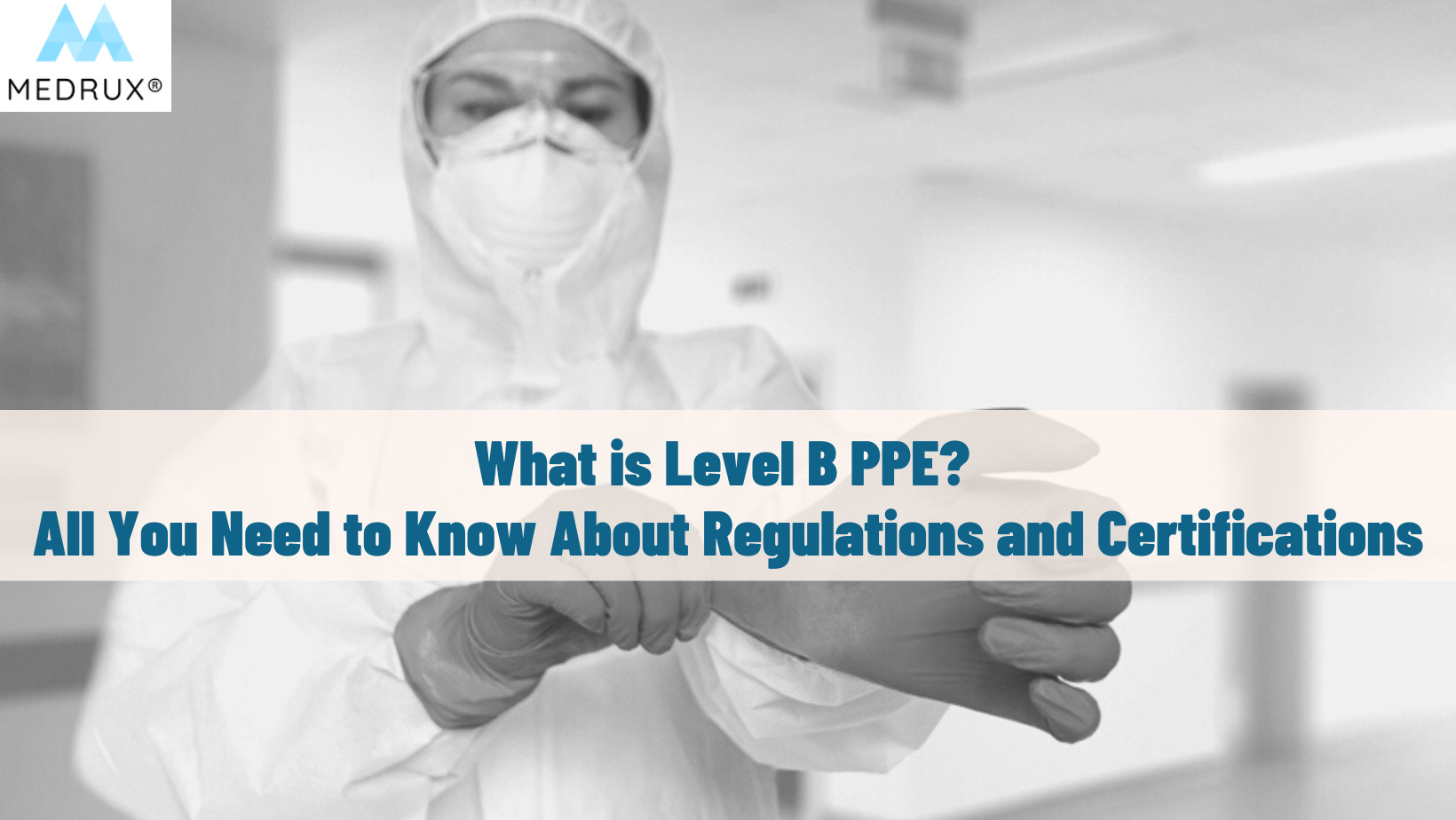Are you looking for information about level A PPE and can’t decide whether you should use this level of personal protective equipment?
You clicked on the right article.
Let us tell you why.
PPE is essential in protecting users from a wide range of hazards.
From suits, coveralls, and gloves to masks and advanced breathing apparatus.
They’re essential, and each item has applications, uses, and requirements.
Here at the MEDrux family, we decided to share with you a series of articles on PPE levels.
This one will give you a comprehensive guide on level A PPE.
What hazards it protects against, and what standards and regulations cover it?
In addition, you will know the situations in which you should use it, its merits and drawbacks, and who’s most likely to need it.
Let’s start.
Classification of PPE
PPE is worn to minimize the risk of exposure to hazards.
It protects against physical, biological, chemical, radiological, electrical, mechanical, or other hazards.
But have you heard about “PPE ensembles”?
It’s a group of individual PPE items worn together to protect the wearer.
PPE ensembles are classified according to two systems:
The first is the classification of the Occupational Safety and Health Administration (OSHA) and the Environmental Protection Agency (EPA).
In the 1910.120 regulation, Appendix B, PPE is divided into four levels (A, B, C, and D) based on the degree of protection they offer.
The second is the National Fire Protection Association (NFPA) classification for protective clothing.
The NFPA divides them into four categories (1, 2, 3, and 4), equivalent to the OSHA and EPA levels.
To cut it short, level A is the most protective, while level D is the least protective.
Let’s get started and see everything we need to know about level A PPE.
What is level A PPE?
Level A PPE is the most protective level.
This means it’s necessary to wear it when the highest level of the skin, respiratory, and eye protection is needed.
It consists of the following:
- A positive-pressure, full-facepiece SCBA or SAR with escape SCBA, approved by the (NIOSH).
- encapsulating vapor and chemical-protective suit
- Outer and inner chemical-resistant gloves
- Chemical-resistant boots with a steel toe and shank
Some items, such as coveralls, long underwear, and a hard hat (worn under a suit), are optional.
Generally, all of them should be consistent with OSHA’s general requirements for PPE (29 CFR 1910.132)
with a quick look, we can see it’s divided into two main categories: respiratory and skin protection.
Let’s see each, what it’s for, and what their standards are.
Level A PPE for Respiratory protection
Positive-pressure, full-facepiece self-contained breathing apparatus (SCBA).
SCBAs protect users against oxygen deficiency, dust, gases, and vapors.
They’re widely used in various fields such as firefighting, rescue operations, escape training at fire stations, iron works, chemical plants, nuclear facilities, etc.
So why use Level A SCBA?
They provide pure, dry, and compressed air.
SCBA draws air from a different source than the surrounding environment.
To explain more, It’s a type of respirator, but it’s more like an oxygen tank SCUBA divers carry on their backs to provide you with pure, dry and compressed breathing air in dangerous situations.
Positive pressure and a full facepiece provide extra protection.
A whole piece covers the entire face, meaning it doesn’t only provide respiratory protection but also eye protection. It connects to the portable tank through a hose.
Meanwhile, positive pressure blows out the air to keep contaminants out in the event of a seal failure or leakage through gaps.
Hence, it offers better protection than other respirators.
Negative-pressure SCBAs are prohibited for HAZMAT incidents as they may allow the intake of contaminants into the facepiece. (1)
It’s easier to breathe through.
Positive pressure helps you breathe more accessible as it decreases the load caused by drawing the air through the filter.
It’s the highest level of respiratory protection.
SCBA has an assigned protection factor (APF) of 10,000.
This means that the person wearing it can only get 1/10,000 of the contaminants outside.
Therefore, they provide the highest level of respiratory protection.
In case SCBA isn’t available, you should consider the following option:
Positive-pressure supplied air respirator (SAR) with SCBA-type auxiliary escape respirator.
SAR supplies air through a full facepiece connected to a distant air source (away from the contamination area) through an airline. As a result, SAR can be used for more extended periods.
Notwithstanding, SAR has an assigned protection factor (APF) of 1000, less than SCBAs.
That’s why Level A SAR should have an SCBA-type auxiliary escape respirator.
Why?
Protect against harmful gases, vapors, and fumes in case of SAR failure.
In other words, it’s like a backup plan if something goes even worse and you need an emergency escape.
What about the Level A PPE regulations and certificates for respiratory protection?
In the US, any respiratory PPE must comply with OSHA’s respiratory protection standard (29 CFR 120.134).
Specifically, SCBA should comply with NIOSH 42 CFR Part 84.
If it’s intended to be used by firefighters, it must comply with the NFPA 1981 standards.
Meanwhile, in Europe, there’re multiple standards for the requirements, testing, and CE marking of the SCBA used as level A PPE.
These include EN 137, EN 145:1997, EN 403:2004, and EN 13794:2002.
What about level A PPE for dermal and skin protection?
Let’s figure it out.
Level A PPE for skin protection
Level A PPE protects the skin against dry powders and solids, bloodborne pathogens, toxins, carcinogens, and biohazards.
Furthermore, it protects against chemical splashes and droplets from inorganic acids and bases, organic solvents, corrosive materials, and toxic industrial materials.
Fully Encapsulating chemical- and vapor-protective suits
This suit is essential for Level A PPE.
Sometimes it’s called a HAZMAT suit.
For suits to qualify as Level A PPE, they must be fully encapsulated with the following items:
- A full facepiece SCBA
- Intrinsically two-way radio for communication
- Chemical-resistant inner and outer gloves
- Chemical-resistant boots with steel toes and shanks
It must provide vapor, gas, and chemical protection and flash-fire and radiant heat protection.
Additionally, it offers liquid splash and particulate protection.
What’s more, it must be able to maintain positive air pressure to prevent inward gas leakage.
Usually comes in red colors to represent danger.
So, what should it be made from?
Generally, the suit material should be firm, showing no permeation, breakthrough, or penetration.
It should be made of materials with a broad range of chemical resistance, usually butyl rubber.
In addition, a Chemical-resistant inner suit might be worn underneath for extra protection.
What are the certificates and international standards for Level A fully-encapsulating suits?
In the United states:
Level A fully encapsulating suits must meet the NFPA Standard 1991, which covers the minimum requirement for the design, manufacture, and performance of level A suits.
Moreover, it sets the standards for chemical permeation, vapor tightness, flame resistance, and material durability.
In addition to chemical, flash fire escape, and liquefied gas protection criteria.
-
Chemical permeation
Suits are tested according to ASTM F739-85 and ASTM F903-18 standard test methods to determine which chemicals it protects against.
How?
By showing the permeation rate (transfer of chemicals through the suit in a specific time) and the breakthrough detection time (time between the contact of the chemical with the outside of the case and the detection of this chemical inside the suit).
Generally, breakthrough times of more than one hour are considered acceptable.
In addition to these tests, suits should be evaluated for chemical resistance using the ASTMF1001-86, the standard chemical selection for evaluating protective clothing materials, and ASTM F1301-18 for labeling them.
-
Vapor and gas tightness:
Pressure testing is done to make sure that suit is vapor-protective.
How?
By pressure or inflation tests and leak tests found in ASTM Standard Practice F1052.
While in Europe:
In addition to the CE mark, level A suits should meet the EN 943 standards, which cover protective clothing against liquid and gaseous chemicals.
We covered the encapsulating suit; let’s see some of its components.
Level A PPE for hand protection
Gloves are essential PPE for hand protection.
They offer comfort and safety to perform tasks with different exposures and risks in diverse situations.
Usually, gloves adhere to 29 CFR 1910.138 for hand protection.
Level A PPE should include gloves with chemical resistance to various chemicals and mixtures.
Therefore, they should be Type A protective gloves according to the EN ISO 374 standards for chemical-resistance gloves.
Level A gloves can be included in the suit or purchased separately.
In either case, there’re inner gloves and outer gloves.
Some suits include glove systems that reduce the inner glove inversions when you remove your hand from the outer gloves.
Chemical-resistant inner gloves
Nitrile is almost the standard choice in level A PPE inner liner gloves.
Why?
Nitrile gloves are famous for their excellent chemical resistance.
To emphasize, they withstand fuels, petroleum products, oils, greases, organic solvents, weak acids and bases, household detergents, pesticides, and agricultural chemicals.
Furthermore, they protect against cuts, punctures, and abrasions.
Amazingly, while providing exceptional hand dexterity and touch sensitivity, they’re almost like latex gloves but without latex allergies.
Nevertheless, they’re poorly resistant to ketones, esters, amines, alcohols, strong acids, and halogenated and aromatic hydrocarbons.
That’s why you must wear outer gloves.
Sometimes disposable silver shield gloves are used as liner gloves for added protection.
Why?
They’re made of Ethylene Vinyl Alcohol Copolymer; they’re thin and lightweight, offering good agility and flexibility.
Despite their little thickness, they’ve strong seams that withstand tearing, so there’s no need to worry about them compromising the protection.
Moreover, they resist over 280 chemicals, including alcohols, aliphatics, aromatics, chlorines, ketones, and esters.
That is why they’re ideal for handling a wide range of hazardous chemicals. In addition, they’re hypoallergenic and free of chemical accelerators and plasticizers.
What about the outer gloves?
Chemical-resistance outer gloves
Suits have outer gloves with more robust protection levels.
They are recommended to be at least 14 mm thick and made of neoprene, butyl rubber, or Viton.
Neoprene gloves
Neoprene gloves offer exceptional protection against environmental factors such as oxidation, ozone, and sunlight, in addition to high temperatures.
They’re strong, durable with unmatched tear resistance
Moreover, their chemical and wear resistance are superior to other types of synthetic rubber.
They protect against hydraulic fluids, gasoline, alcohol, organic and inorganic acids, and alkalis.
Butyl rubber gloves
Butyl rubber is highly durable, with extraordinary resistance to a wide range of chemicals, such as
- Peroxide
- Rocket fuels
- Highly corrosive acids such as nitric acid, sulfuric acid, and red-fuming nitric acid
- Strong bases such as barium hydroxide and calcium hydroxide
- Alcohols and aldehydes
- Ketones and esters
- Nitro compounds
What’s more, they resist oxidation, ozone corrosion, and abrasion.
Amazingly, they’re very thick and durable and always come with long sleeves for extra protection.
Additionally, they have the highest permeation resistance to gases and water vapors.
For all the reasons listed above, butyl gloves are the most common type of gloves to be used in military protection from chemical warfare agents; in other words, they’re an indispensable part of the level A PPE ensemble.
Viton gloves
Viton gloves are made of fluoroelastomer, providing the most chemical resistance of all rubber gloves.
To explain more, they’ve excellent chemical resistance to fuels, highly corrosive chemicals, aromatic and aliphatic hydrocarbons such as benzene, toluene, and xylene, as well as chlorinated solvents.
However, they are costly and primarily designed to handle extremely hazardous chemicals, such as carcinogenic or highly toxic chemicals.
That’s why they’re considered a perfect choice for level A PPE.
Level A PPE for feet, head, and eye protection
Level A PPE suits include items to protect the whole body; this has your head, eyes, and feet.
Regardless, some circumstances may require extra protection and can be separate.
Chemical-resistant boots with steel toes and shank
These boots are made of butyl rubber to protect your feet against harmful chemicals.
Sometimes you’ll be required to wear them over the suit’s feet, while you’ll wear them inside the case.
They should comply with 29 CFR 1910.136 for foot protection in the US.
This regulation, boots should meet one of the following standards:
- ASTM F-2412-2005 and ASTM F-2413-2005
- ANSI Z41-1999 or 1991
In the meantime, EU standards can be found in
- EN ISO 20345:2011 and EN ISO 20346:2014 Standards for Safety Footwear
- EN 13832-2 (2006 and 2018) Chemical-Protective Footwear
- EN ISO 20347:2012 Occupational Footwear
- EN 15090:2012 for Firefighters Footwear
Hard hat (worn under suit) as needed.
Firefighters’ and industrial safety helmets protect the head from dangers such as impacts, falling of heavy objects, dripping or splashing chemicals, and heat exposures.
Level A PPE should comply with (ANSI) Z89.1 standard in 29 CFR 1910.135 for head protection.
Safety goggles
The protective suit already has a wide-view face shield for an expanded field of vision. Still, you can have extra safety goggles for additional protection or according to the situation.
On the condition that it doesn’t prevent you from doing the work or hinder your vision.
Level A PPE should comply with ANSI/ISEA Z87.1 as stated in 29 CFR 1910.133 for eye and face protection.
Now we’re familiar with all the items in the level A PPE ensemble, let’s see when and why you should use them.
When to use level A protection?
As they’re highly protective, level A PPE is used in situations that require maximum protection.
There’re many factors to consider when selecting them, but most important are the levels of exposure (LOE) and the concentration of contaminants.
These differ according to the situation.
However, there’re three primary exposure levels that you should be familiar with:
- AEGLs for emergencies, terrorist attacks, and warfare agents
- EPA Toxicity Levels for Chemical Mixtures and Pesticides
- IDHL concentration of chemical agents
AEGLs
AFGLs stands for acute exposure levels and guidelines for emergency planners and responders.
AEGLs are expressed in concentrations of airborne chemicals according to the severity of the chemical effect:
- AEGLs-1: Temporary discomfort or asymptomatic effects that are reversible once the exposure is stopped.
- AEGLs-2: Irreversible damage, long-term health effects, or affect the person’s ability to escape danger.
- AEGLs-3: Life-threatening effects or death.
Toxicity levels
EPA classifies acute hazards according to their toxicity and irritating ability in 40 CFR 156.62 into four categories.
- It is highly toxic and irritating.
- II is moderately toxic and irritating.
- III is slightly toxic and irritating.
- IV is practically non-toxic and not irritating.
Level A PPE is recommended for use at the most severe toxicity levels (I and II levels) or (AEGLs 2 and 3) in an emergency.
IDLH
IDLH stands for “immediately dangerous to life and health” and is used whenever there’s an exposure to airborne contaminants that are likely to cause death, immediate or delayed irreversible adverse health effects, or even prevent the person from escaping from the hazardous situation.
NOISH has a document of IDLH values for 85 potentially carcinogenic materials according to OSHA’s definition in 29 CFR 1990.103.
If people are exposed to these materials in concentrations above the recommended exposure limit (REL) or at any concentration if the REL isn’t available, NIOSH recommends that most protective respirators (Level A) be worn (2)
In addition, Level A respirators are recommended in case of exposure to concentrations of:
- Ethylene oxide > 5 ppm
- Crystalline silica > 25 mg/m3
Level A PPE is required in RED Zones
Level A PPE is used in areas where significant contamination with chemical, biological, radiological, or nuclear (CBRN) agents is confirmed or strongly suspected.
Usually, it’s called the “RED zone,” and it’s a life-threatening area.
According to NIOSH, “high levels of protection (i.e., level A ensembles) are necessary when hazards and airborne concentrations are either unknown or expected to be high (3).
What does this mean?
It means that Level A protection is required under the following conditions and situations:
- Whenever there’s an active release of CBRN.
- The substances present are known or suspected to cause toxicity, carcinogenicity, severe damage to health, or death.
- The substance presets are toxic, with high concentrations of gases and vapors.
- Handling materials that are harmful to or can be absorbed through the skin.
- If the type or concentration is unknown.
-
- If the method of distribution and release is unknown
- If the discharge has stopped, but the concentration is still unknown
- Oxygen-deficient atmospheres or poorly ventilated areas
Thinking about it, only a few people should wear level A PPE; let’s find out who.
Who should use Level A PPE?
Level A PPE is the primary protection source for emergency workers and first responders like the army, firefighters, and hazmat teams.
Why?
Because they face unknown sources of danger or multiple dangers at the same time, with many risks that require instant interventions.
Furthermore, they’re expected to be in IDLH environments.
First Responders (The Army)
First responders face chemical warfare agents such as blistering agents or nerve gases.
These things are highly toxic; even the smallest amount can cause severe toxicity and damage.
Moreover, they face biological weapons such as anthrax, plague, or the Ebola virus.
These are highly fatal and cause a high death rate and public panic.
The good thing is that they don’t naturally occur; people can only be exposed to them if there’s a terrorist attack or an accidental release from a military storage facility or BSL-4 laboratory.
When there’s an active release of these agents or when the concentration is unknown, level A PPE is a must to protect the early responders.
Firefighters
Did you know that almost 14% of injuries among firefighters are due to burns, asphyxia (including smoke inhalation), and heat strokes? (4)
Firefighters are at risk of burns, eye loss, and exposure to toxic chemicals, gases, and vapors such as carbon monoxide, carbon dioxide, and nitrogen oxides.
What makes things worse is that continuous exposure to such chemicals and toxins is harmful; in the short term, it causes coughing, shortness of breath, bronchitis, and wheezing.
Meanwhile, in the long term, things could get worse, and they could develop asthma, allergies, and lung diseases such as COPD.
And it doesn’t stop there; firefighters have a 9% increase in cancer diagnoses and a 14% increase in cancer deaths compared to the average American. (5)
That’s why firefighters need to wear level A PPE to protect their skin against wildfires and help keep their respiratory system safe and sound.
Level A PPE for first responders should follow different standards:
- HAZWOPER Appendix B (Hazardous Waste Operations and Emergency Response) standard 29 CFR 1910.120a
- NFPA 1994 Standard on Protective Ensembles for First Responders to CBRN Terrorism Incidents
- NFPA 1999 Standard on Protective Clothing for Emergency Medical Operations (Consider protection against biological agents)
HAZMAT Team
Hazmat teams involve Technicians, specialists, and cleaners.
They must wear level A PPE.
Why?
To protect them as they’re responsible for stopping and containing hazardous materials such as toxic chemicals, nuclear waste, industrial pollution, and infectious diseases.
In addition to removing hazardous waste and clearing up contaminated areas.
Workers in (BSL-4) Laboratories
Biosafety labs (Level 4) are designed to study infectious agents and toxins that can be easily transmitted and might result in high death rates.
Such as anthrax, plague, smallpox, and Ebola.
These agents caused diseases and infections that tormented the world and the fact that any of them can return sounds like a nightmare.
BSL-4 workers can be exposed to them through inhalation, ingestion, skin contact, penetration of the skin through abrasions or cuts, or contact with the mucosal membrane of the eyes or nose.
Because these labs are so dangerous and infectious, level A PPE is required, as it isolates the lab workers from the surroundings, ensuring no contact with these hazardous materials.
To summarize, Level A PPE isn’t for everyone; it’s for specific people in hazardous situations like first responders, firefighters, HAZMAT teams, and BSL-4 workers.
Our next question shall be, “what are the drawbacks to level A PPE?”
Let’s go over some disadvantages that make level PPE unsuitable for everyone.
Disadvantages of Level A PPE
Level A PPE can be pretty sophisticated, and not knowing how to use it properly can put your life in danger.
Especially respiratory protective PPE, which requires fit testing before use.
For this reason, anyone who is expected to use level A PPE will need to complete training programs and certify that they’re competent, comfortable, and able to correctly choose and use the PPE for the situation.
Suits are usually more oversized than regular clothing and work suits so they can be a little bulky and heavy in weight.
Nevertheless, many are now designed with new technologies to be lighter and much easier to carry around.
One more drawback to think of is the limited air supply of SCBAs.
This shortens the time they can be used (usually 1 hour), and if you’re using SAR, the airlines are not long enough (limited to 300 feet) and can limit the distance you can go.
In addition to the fit test, SAR requires a checklist to ensure they’re not damaged, constricted, or contaminated.
Whether using the encapsulated suite or the SCBA devices, your mobility and vision may be limited.
This can result in trips or falls or prevent you from completing tasks comfortably and effectively.
In addition, using Level A PPE can result in heat and physical stress and increase demand on the heart as well as psychological stress like anxiety or claustrophobia (6)
Therefore, they require medical clearance and monitoring.
Finally, its sophistication and many requirements make it much more expensive than many types of PPE.
In conclusion,
Level A PPE provides the highest protection level anyone can seek. Yet, they’re not widely used among individuals.
Contrary to popular belief, they’re primarily used in situations requiring the highest respiratory, skin, and eye protection levels.
This includes first responders like HAZMAT teams, firefighters, and law enforcement teams in hazardous situations or terrorist attacks.
A fully encapsulating vapor and gas protective suit with the highest respirators (SCBA) is the landmark of level A PPE.
If you use level A PPE, you must ensure it follows international standards and regulations.
Most importantly, it would be best if you were trained to use them properly.
In the following article, we will be going through level B PPE.
We hope you now know everything about level A PPE.
If you still have any questions, don’t hesitate to send them.








